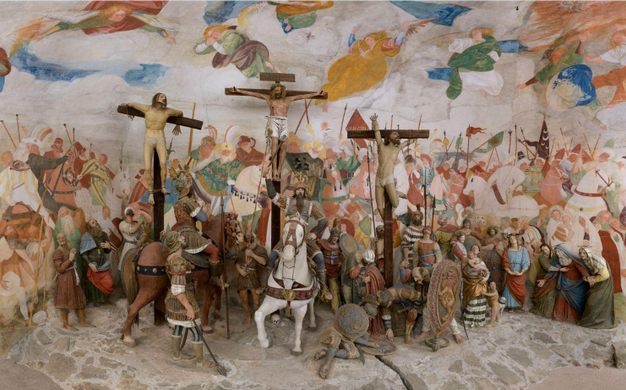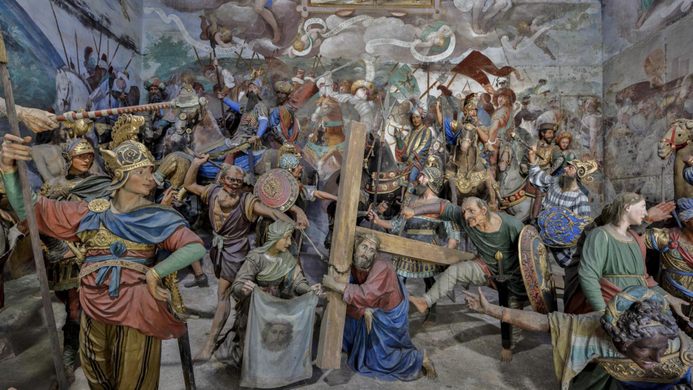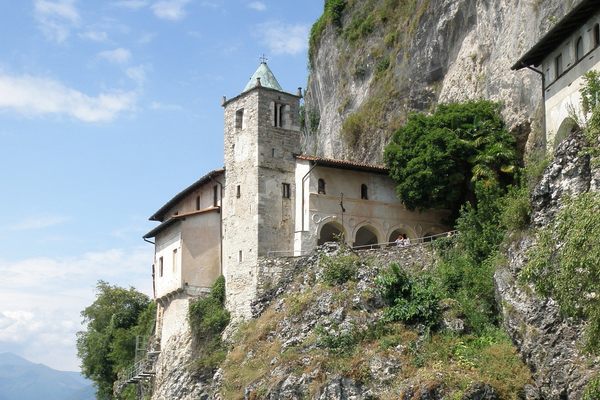AO Edited
Sacro Monte di Varallo Sesia
A 15th-century park that recreates a bit of the Holy Land in Italy.
The Sacro Monte, which translates to “Sacred Mountain of Varallo,” all started at the end of the 15th century when Franciscan friar Bernardino Caimi came back from his pilgrimage to the Holy Land of Jerusalem. On his return to Italy, Caimi wanted to bring a bit of the Holy Land to Varallo, a commune in the country’s Piedmont region. Caimi built some modest buildings that were meant to replicate places in Jerusalem connected to Jesus Christ’s life.
In the early 16th century, Valsesian artist Gaudenzio Ferrari was tasked with creating colorful statues to enhance Caimi’s earlier project. Later in the century, in 1565, Milanese Giacomo d’Adda hired famed architect Galeazzo Alessi to further modify the project. Then Bishop Carlo Bascapé, who served as bishop from 1593 to 1615, and his successors continued to add to the Sacro Monte.
Today Sacro Monte continues to be an ample outdoor space with gardens and natural features. The hill features a religious pilgrimage route that replicates the path taken by Jesus to his crucifixion. The Sacro Monte resembles a fortified city built on a rocky wall with its wall tapestries, monumental entrance door, and square that emulates the ancient city of Jerusalem. It also features palazzi porticati (covered palaces) and colonnades, which give it the appearance of a real city.
In addition to being a religious site, the Sacro Monte is also an artistic and architectural masterpiece. It is home to over 800 paintings and statues that depict scenes from the Bible and the life of Jesus. The combination of religious imagery, art, architecture, gardens, and forest make the Sacro Monte a unique and special place to visit.















Follow us on Twitter to get the latest on the world's hidden wonders.
Like us on Facebook to get the latest on the world's hidden wonders.
Follow us on Twitter Like us on Facebook